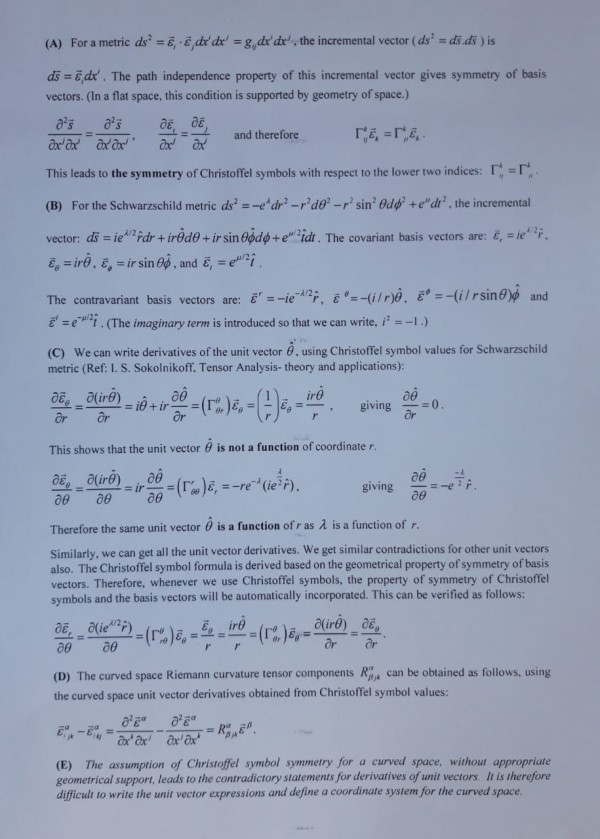The Christoffel symbols are symmetric with respect to the lower indices. This property is based on the geometric condition of path independence of the incremental vector. (Geometry of the flat space supports this property.)
The Christoffel symbol formula is derived based on the condition of symmetry of basis vectors. The Christoffel symbol therefore becomes symmetric with respect to the lower indices, for a curved space-time defined by the Schwarzschild metric, even though we do not have a geometrical picture for the four-dimensional curved space-time.
See the attached image for the verification of symmetry of basis vector in a curved space. But this leads to contradictory results for the unit vector derivatives.
It therefore becomes difficult to write the expressions for the unit vectors and define a coordinate system for the curved space. Hence, it is difficult to write a force vector or any other vector. To overcome this problem, it is assumed that the space is normally curved and approximately flat in a local inertial frame. This assumption can help us to write the vectors locally, but still not sufficient to provide the geometrical justification for the Christoffel symbol symmetry in a curved space.
Question: If it is incorrect to presume the symmetry condition for the conventional Christoffel symbol in a curved space-time? OR
Do we need to first draw a geometrical picture of the four-dimensional curved space-time to write an appropriate Christoffel symbol formula?
Ref: https://physicsoverflow.org/44303/a-classical-scrutiny-of-the-schwarzschild-solution

 Q&A (4906)
Q&A (4906) Reviews (205)
Reviews (205) Meta (440)
Meta (440) Q&A (4906)
Q&A (4906) Reviews (205)
Reviews (205) Meta (440)
Meta (440)